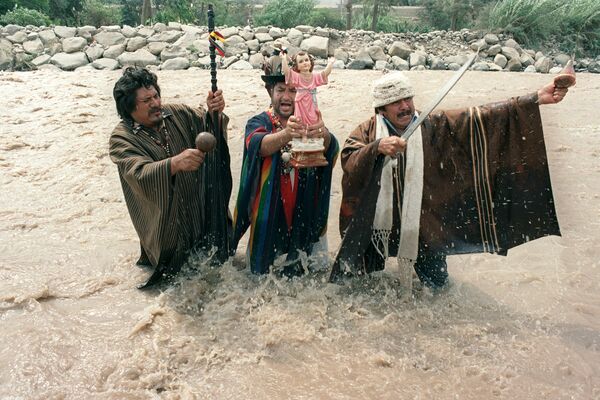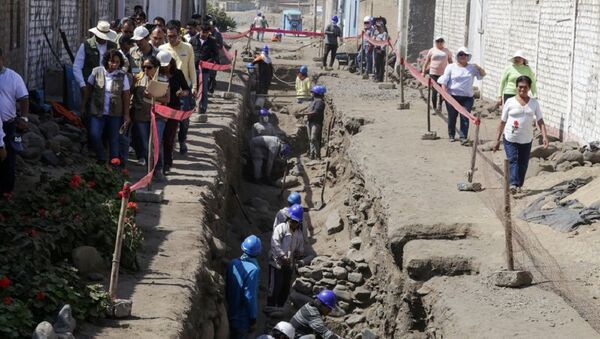The remains of 227 children aged four to 14 have been discovered in Peru in what experts believe is the world's largest sacrifice site, reports National Geographic Magazine.
Chief archaeologist Feren Castillo said the children were sacrificed in a ritual to honour the pre-Colombian Chimu culture's gods.
All of the skeletons were found facing the sea and some still had hair and skin.
“They were sacrificed to appease the El Nino phenomenon, and show signs of being killed during wet weather", Castillo told AFP on Tuesday.
Castillo added that there may still be more sacrificed children to be found at the new site in Huanchaco.
“It's uncontrollable, this thing with the children. Wherever you dig, there's another one", Castillo said.
Archeologists have been working on the dig at the site in Huanchaco, a beach-side tourist town north of the capital Lima, since last year.
Huanchaco was a site where many child sacrifices took place during the time of the Chimu culture, between 1200 and 1400.
Children’s remains were first unearthed at the dig site in the town's Pampa la Cruz neighbourhood in June 2018.
Pampa la Cruz is a short distance from Huanchaquito, where the remains of 140 sacrificed children and 200 llamas were found in April 2018.
After the discovery, experts began to study the possibility that the El Nino weather phenomenon was a likely explanation for the scale of the human sacrifice.
The weather change associated with El Nino, a climate change pattern involving the unusual warming of water in the Pacific Ocean, might have prompted the sacrifices
The event is typically linked with adverse effects on fishing, agriculture, and local weather from Ecuador to Chile.

The sacrifices would have been an attempt to persuade the gods to stop the rain.
Gabriel Prieto, a professor of archaeology from the National University of Trujillo, said:
“This number of children, this number of animals—it would have been a massive investment on behalf of the state".
The Chimu civilisation that extended along the territory of the Peruvian coast to Ecuador, disappeared in 1475 after it was conquered by the Inca Empire.


